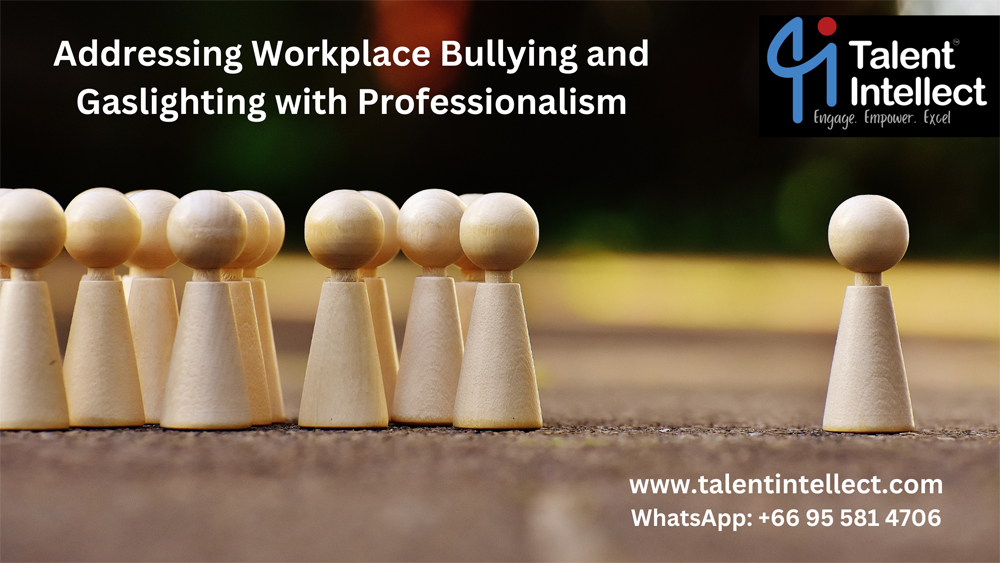The ideal workplace fosters collaboration, respect, and productivity. Unfortunately, this ideal isn’t always met. Bullying and gaslighting, insidious forms of emotional abuse, can create a toxic environment that erodes employee well-being and hinders performance. Recognizing and addressing these issues professionally is crucial for both individuals and organizations.
Understanding the Fog: Bullying vs. Gaslighting
While often used interchangeably, bullying and gaslighting have distinct characteristics:
- Workplace Bullying: Repetitive, unreasonable behavior directed towards an employee or group, causing physical or psychological harm. It can be overt (yelling, threats) or covert (excluding someone from meetings, spreading rumors).
- Gaslighting: A subtler form of emotional abuse that manipulates a person’s perception of reality. Gaslighters deny events, make the victim question their memory or judgment, and twist situations to make the victim appear “crazy.”
These tactics create a “fog” of confusion and self-doubt, making it difficult for the target to identify and confront the abuse.
The Impact of FOG: Recognizing the Signs
Bullying and gaslighting have a significant impact on individuals and organizations. Here’s how to recognize their signs:
For Individuals:
- Emotional: Anxiety, depression, fear, low self-esteem, confusion, feeling constantly on edge.
- Physical: Headaches, stomach-aches, sleep problems, fatigue.
- Behavioral: Withdrawal from colleagues, loss of motivation, decreased productivity, absenteeism.
Organizational Effects:
- Reduced productivity: Employees stressed and disengaged, leading to lower output.
- High turnover: Employees leave for healthier work environments, costing the company time and money.
- Negative work culture: A climate of fear and distrust demoralizes the entire workforce.
Cutting Through the Fog: Strategies for Addressing Abuse
If You’re Being Bullied or Gaslighted:
- Document Everything: Keep a detailed record of incidents, dates, witnesses, and specific examples of bullying behavior.
- Talk to a Trusted Colleague: Seek support and gauge if others have noticed similar behavior.
- Confront the Abuser (Optional): If safe, a calm, assertive confrontation might address minor issues. However, proceed with caution – gas lighters may use this as an opportunity to manipulate further.
- Report the Abuse: Inform HR or a supervisor. Be prepared to present your documentation.
- Seek Support: Talk to a therapist or counsellor to gain coping strategies and manage the emotional impact.
For Managers and HR:
- Develop Clear Policies: Establish a zero-tolerance policy for bullying and gaslighting, outlining reporting procedures and consequences.
- Training and Awareness: Educate employees about these behaviors and empower them to identify and report them.
- Bystander Intervention: Train employees on how to recognize and respond appropriately when they witness bullying or gaslighting.
- Investigations: Thoroughly investigate complaints, ensuring fair and confidential processes.
- Support for All Parties: Provide resources and support for both the victim and the accused, ensuring a safe and healthy work environment.
Maintaining Professionalism:
Throughout this process, professionalism is critical.
- Focus on Behavior: Instead of personal attacks, address specific actions and their consequences.
- Maintain a Calm Demeanor: Avoid escalating the situation with anger or defensiveness.
- Use Clear Communication: Be direct and factual in your communication, avoiding accusatory language.
- Document Everything: Keep detailed records of all interactions and decisions made during the process.
Building a Clear Sky: Preventing Abuse
Several proactive measures can minimize the risk of bullying and gaslighting:
- Promote a Culture of Respect: Foster an environment where everyone feels valued and respected.
- Open Communication Channels: Encourage open dialogue and provide safe spaces for employees to express concerns.
- Conflict Resolution Training: Equip employees with skills to address disagreements constructively.
- Lead by Example: Leaders should model professional behavior and set a clear tone against abuse.
By proactively addressing and preventing bullying and gaslighting, organizations can create a more positive and productive work environment for everyone. Remember, addressing this issue requires a multi-pronged approach, encompassing individual resilience, professional communication, and organizational commitment. By cutting through the fog and building a clear sky of respect and professionalism, workplaces can thrive. Contact Talent Intellect the Management Consulting firm in Thailand for staff outsourcing, Human Resource Management in Thailand and HR outsourcing support.
Disclaimer: This article is intended to provide general information and should not be taken as legal or professional advice. If you are experiencing workplace bullying or gaslighting, it is recommended to consult with a trusted advisor or seek legal counsel.






